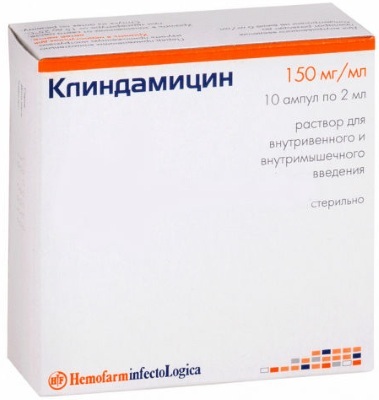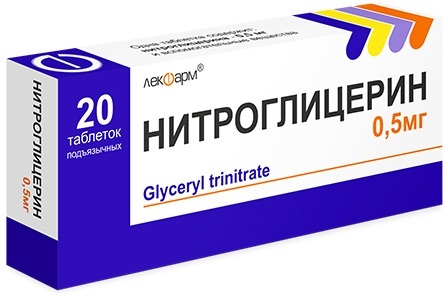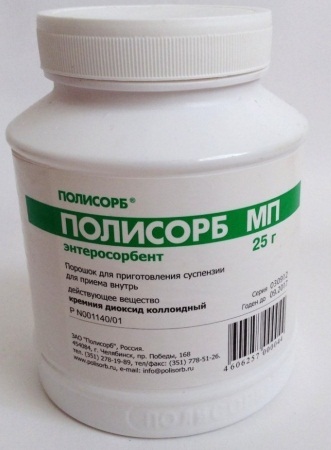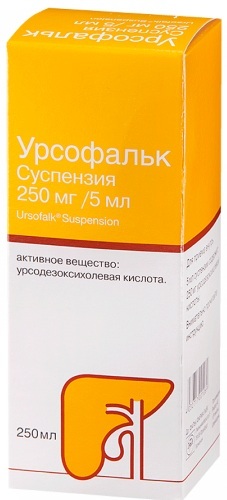Cholecystitis is a dangerous disease, which is characterized by inflammation of the walls of the gallbladder. This ailment is considered one of the most common complications of gallstone disease. The main reasons for the development of inflammatory processes in this organ of the abdominal cavity are the infection of its lumen with pathogenic microflora, as well as chronic stagnation of bile.
The most effective treatment for cholecystitis is the use of medications, the properties of which are to provide antibacterial, anti-inflammatory and choleretic actions. Lack of properly organized therapy is fraught with the transition of the disease into a severe form with the risk of complete removal of the gallbladder.
Record content:
- 1 The goals of drug therapy for cholecystitis
-
2 Groups of drugs used, names of drugs, schemes of use
- 2.1 Antibiotics
- 2.2 Sulfonamides
- 2.3 Choleretic drugs
- 2.4 Antispasmodics
- 2.5 Enzymes and enterosorbents
- 2.6 Hepatoprotectors
- 2.7 Cholekinetics
- 2.8 Cholelitholytics
- 2.9 Prokinetics
- 3 The tactics of using drugs during an exacerbation
- 4 Video about the treatment of cholecystitis
The goals of drug therapy for cholecystitis
Cholecystitis is a disease that can occur in an acute or chronic form of its development.
For the timely relief of pathological symptoms in the form of indigestion, bouts of spasmodic pain in the right hypochondrium, lack of appetite, it is necessary to start a course of treatment as soon as possible using the most effective medicines of various pharmacological groups.
The table below summarizes the main goals of drug therapy for cholecystitis:
| Treatment goals for acute and chronic cholecystitis | Characterization of the therapeutic process |
| Antiseptic debridement of the gallbladder cavity | In 45% of cases, inflammation of the walls of the gallbladder is caused by its infection with bacterial microorganisms that have penetrated into its cavity along with the flow of the bloodstream. The main goal of the treatment of cholecystitis of infectious etiology is the suppression of pathogenic agents using drugs with an antibacterial spectrum of action. |
| Therapy of interrelated diseases | A painful condition of the gallbladder can occur against the background of developing inflammation of the tissues of the pancreas. These organs of the digestive and endocrine systems of the body perform related functions aimed at rapid digestion and high-quality assimilation of consumed food. In the case of dysfunction of the pancreas, the gallbladder is disrupted, which ultimately leads to its chronic inflammation. At this stage of treatment, the main goal of drug therapy is to restore the functions of the pancreas with the help of anti-inflammatory and enzymatic drugs. |
| Diagnostics of the tone of the walls of the gallbladder | The gallbladder, which is in a state of hypertonicity, can provoke pathological symptoms in the form of spasmodic pain, nausea, and vomiting. In order to relax smooth muscles, which is responsible for the tone of the walls of this organ, antispasmodics are used. This type of drug therapy is used symptomatically as the pain syndrome worsens. |
| Organization of dietary meals | Compliance with a strict diet aimed at preventing negative stress on gallbladder function is a prerequisite for successful drug therapy. A rational and balanced diet should be present throughout the entire course of treatment. |
| Getting rid of parasitic microorganisms | In 23% of clinical cases, the development of acute or chronic cholecystitis is caused by infection of the gallbladder with parasites. These are helminths and protozoa unicellular microorganisms that destroy the walls of the gallbladder, maintaining a constant focus of the inflammatory process. At this stage of drug therapy, the main goal of doctors is to cleanse the organ from parasitic life forms. |
| Removal of calculi | Gallstone disease is a pathology that most often causes inflammation of the walls of the gallbladder. To remove extraneous calculi formed in the cavity of this organ, drugs are used that dissolve the structure of the stones. As the therapeutic effect is achieved, the stones are converted to the state of sand, which is subsequently excreted from the body naturally through the intestines. |

Each of the above goals of drug therapy can be achieved only if the highest quality and most effective drugs are used.
Treatment of acute and chronic cholecystitis should be carried out over a continuous course antibacterial, anti-inflammatory, antispasmodic, and antiparasitic means.
Groups of drugs used, names of drugs, schemes of use
Treatment of cholecystitis with medicines (the most effective drugs allow you to restore the stable functioning of the gallbladder) provides for the observance of the principle of an integrated approach with the simultaneous use of drugs of several pharmacological groups.
Antibiotics
Therapy of cholecystitis with the use of antibacterial drugs is indicated if, according to the results of a diagnostic examination, an infectious lesion of the walls of the gallbladder was established.
The advantage of using medicines of this category is that their constituent substances penetrate into the tissues of the diseased organ, saturate the bile, and also have a prolonged effect.
Depending on the type of active ingredient, antibiotics have a bactericidal or bacteriostatic effect. The positive therapeutic effect of the use of these drugs is achieved by suppressing the cell division of infectious microorganisms.
In the process of antibiotic therapy, the following medications can be used:
- Clindamycin;

- Tsiprolet;
- Cefazolin;
- Ampicillin;
- Erythromycin.
Before starting a course of treatment with antibiotics, it is imperative to determine the type of bacterial microflora, and then carry out the selection of the drug, the active substances of which are detrimental to infectious microorganisms.
The average duration of antibiotic therapy is 7-14 days, depending on the severity of the inflammatory process.
Sulfonamides
Sulfonamides are a separate category of synthetic antimicrobial drugs that have a bacteriostatic effect.
Medicines of this group exhibit therapeutic activity against gram-positive and gram-negative microorganisms parasitizing in the gallbladder cavity.
Most sulfonamides have the property of blocking cell division of the simplest infectious agents due to suppression of the synthesis of dihydrofolic and folic acid, which is necessary for the full development of bacterial microorganisms.
The main component of antimicrobial agents of the sulfanilamide group is sulfanilic acid amide. Medicines of this pharmacological group are produced in the form of tablets covered with a protective film, capsules, as well as injection solutions for intramuscular and intravenous administration.
The following are the most effective medicines in this category:
- Sulfanilamide;
- Mafenid;
- Sulfacetamide;
- Sulfamethrol;
- Sulfachloropyridazine;
- Sulfadiazine;
- Sulfapyridine;
- Sulfalen.
To achieve a positive therapeutic effect, sulfanilamide-based antimicrobial agents are prescribed for a course intake for 10-14 days. The dosage regimen is determined individually, depending on the type of bacterial microflora and the drug that is used in a particular clinical case.
Choleretic drugs
Choleretic drugs are used for therapeutic purposes for cholecystitis, which is caused by a decreased tone of the walls of the gallbladder, or prolonged stagnation of bile. Medicines of this group stimulate the functional activity of the liver to increase the volume of synthesis of bile acids.
Medicines in this category are divided into synthetic and natural, containing only natural ingredients. The maximum effectiveness of choleretic drugs is realized if they are used in combination with anti-inflammatory drugs.
The following drugs with choleretic properties can be purchased in retail pharmacy chains:
- Nikodin;
- Allochol;

- Hofitol;
- Ursosan;
- Holosas.
The average duration of a therapeutic course with choleretic drugs is from 2 weeks to 1 month. Medicines of this group are produced in the form of tablets, capsules, syrups and tinctures. Throughout the entire course of treatment with choleretic drugs, it is necessary to monitor the functional state of the liver.
Antispasmodics
Antispasmodics are symptomatic drugs that are indicated for admission to eliminate the feeling of acute pain that occurs against the background of severe inflammation of the gallbladder. The principle of action of these medicines is that they stop the spasm of smooth muscles, which is responsible for the contraction of the walls of the diseased organ. Antispasmodics are divided into 2 main types.
These are neurotropic and myotropic drugs. Medicines of the last subgroup have a relaxing effect directly on the muscle tissue located in the circumference of the gallbladder.
These include the following funds:
- Euphyllin;
- Magnesium sulfate;
- Papaverine;
- Theophylline;
- Dibazol.
Antispasmodics of a neurotropic type eliminate an attack of acute pain that has arisen in the right hypochondrium, by suppressing the functions of certain parts of the central nervous system responsible for nerve impulses of smooth muscles musculature. Medicines in this category are distinguished by a large number of side effects, as well as a negative effect on the cardiovascular system.
There are the following neurotropic antispasmodics:
- Nitroglycerine;

- Nitranol;
- Zrinit;
- Nitrosorbide.
Antispasmodics are available in the form of tablets, capsules, suppositories, injection solutions for intramuscular and intravenous administration. The duration of the use of drugs in this group is no more than 3-5 days to relieve the symptoms of acute cholecystitis.
Enzymes and enterosorbents
Treatment of cholecystitis with medicines (the most effective means allow you to restore the functions of the gallbladder to the most compressed terms), containing digestive enzymes, is indicated for patients with cholecystitis who suffer from concomitant pathologies of the pancreas glands.
Dysfunction of this organ of the endocrine system can cause disruption of the gallbladder with the further development of inflammatory processes. Enzymes are taken immediately before a meal or immediately after a meal.
The following drugs with enzymatic activity are distinguished:
- Creon;
- Festal;
- EnziTrio;
- Mezim;
- Enzistal;
- Unienzyme.
The use of enterosorbents is advisable if, according to the results of a diagnostic examination, the patient showed signs of general intoxication of the body, which arose against the background of an acute form cholecystitis.
In this case, the following medications can be used:
- Polysorb;

- Enterosgel;
- Activated carbon;
- Filtrum-STI.
Enzymatic preparations and enterosorbents are available in the form of tablets, capsules, powder for preparing a ready-made suspension, gel-like pastes. Medicines of these categories are indicated for symptomatic therapy for the period of temporary dysfunction of the diseased organ.
Hepatoprotectors
Treatment of cholecystitis with medicines (the most effective drugs relieve the patient of cholecystitis without the risk of relapse diseases) with hepatoprotective properties is aimed at preventing further death of cell membranes liver.
Medicines of this pharmacotherapeutic group stimulate more active regeneration of damaged hepatocytes. Increase liver resistance to negative environmental factors.
The following hepatoprotective agents are distinguished, which are most effective for cholecystitis:
- Gepabene;
- Glutargin;
- Hepa-Merz;
- Carsil;

- Silimar.
Hepatoprotective drugs are taken in therapeutic courses, the duration of which ranges from 14 days to 3 months. The main forms of release of medicines in this group are capsules, tablets, injection solutions.
Cholekinetics
Cholekinetics are a separate subgroup of choleretic agents that promote more active secretion of bile into the intestinal cavity. Drugs in this category increase the tone of the walls of the gallbladder, and also prevent stagnation of bile inside this organ.
The following are the most effective cholekinetics:
- Odeston;
- Tykveol;
- Olimethrin;
- Liprachol;
- Hymecromon.
Cholekinetics are medications that come in the form of tablets, capsules, liquid syrups. These drugs may contain synthetic or natural ingredients.
Cholelitholytics
Cholelitholytics are drugs used to medically dissolve stones inside the gallbladder. Medicines of this category allow you to relieve the inflammatory process provoked by extraneous calculi.
In the process of treating cholecystitis of this nature of origin, the following types of cholelitholic agents are used:
- Henochol;

- Ursofalk;
- Urosan;
- Henosan;
- Henofalk.
Drugs in this category are available in the form of tablets, capsules, and injection solutions. Cholelitholytics are taken until a positive effect is achieved on drug-induced crushing of gallbladder stones.
Prokinetics
Prokinetics are drugs that stimulate the functional activity of the digestive tract. Taking medications of this group is indicated for patients suffering from cholecystitis, which arose on the basis of decreased intestinal motility.
The following are the most effective prokinetic agents:
- Domestic litter;
- Motilak;
- Passage;
- Motinorm;
- Motilium.
Most drugs in this category are available in tablet and capsule form. The duration of prokinetic therapy is from 5 days to 1 month. depending on the type of disease and the causative factors that provoked the inflammation of the gallbladder.
The tactics of using drugs during an exacerbation
After the completion of the stage of diagnostic examination with the detection of acute forms of cholecystitis, the following tactics of using drugs are used:
- With the help of antispasmodics, attacks of acute pain in the right hypochondrium are eliminated.
- A course of antibiotic therapy begins (if cholecystitis is caused by infectious microorganisms).
- To maintain stable digestion and prevent intoxication of the body, enzymatic preparations are used, as well as enterosorbents.
- In order to protect the liver tissue, the patient is prescribed hepatoprotectors.
For patients who have stones inside the gallbladder, cholelitholytic agents are used. The dosage of drugs and the duration of treatment depend on the general condition of the patient and the presence of positive symptoms to restore the functions of the diseased organ.
Treatment of cholecystitis using medications of various pharmacological groups is one of the most effective methods of suppressing the inflammatory process inside the gallbladder.
Complex therapy of this disease allows you to completely eliminate attacks of spasmodic pain in the right hypochondrium, suppress the pathogenic activity of bacterial microflora, as well as crush gallstones to the state of the sand.
The duration of drug therapy for cholecystitis ranges from 14 days to several months. The lack of timely treatment of this disease can lead to the complete removal of the gallbladder.
Video about the treatment of cholecystitis
Cholecystitis treatment:



